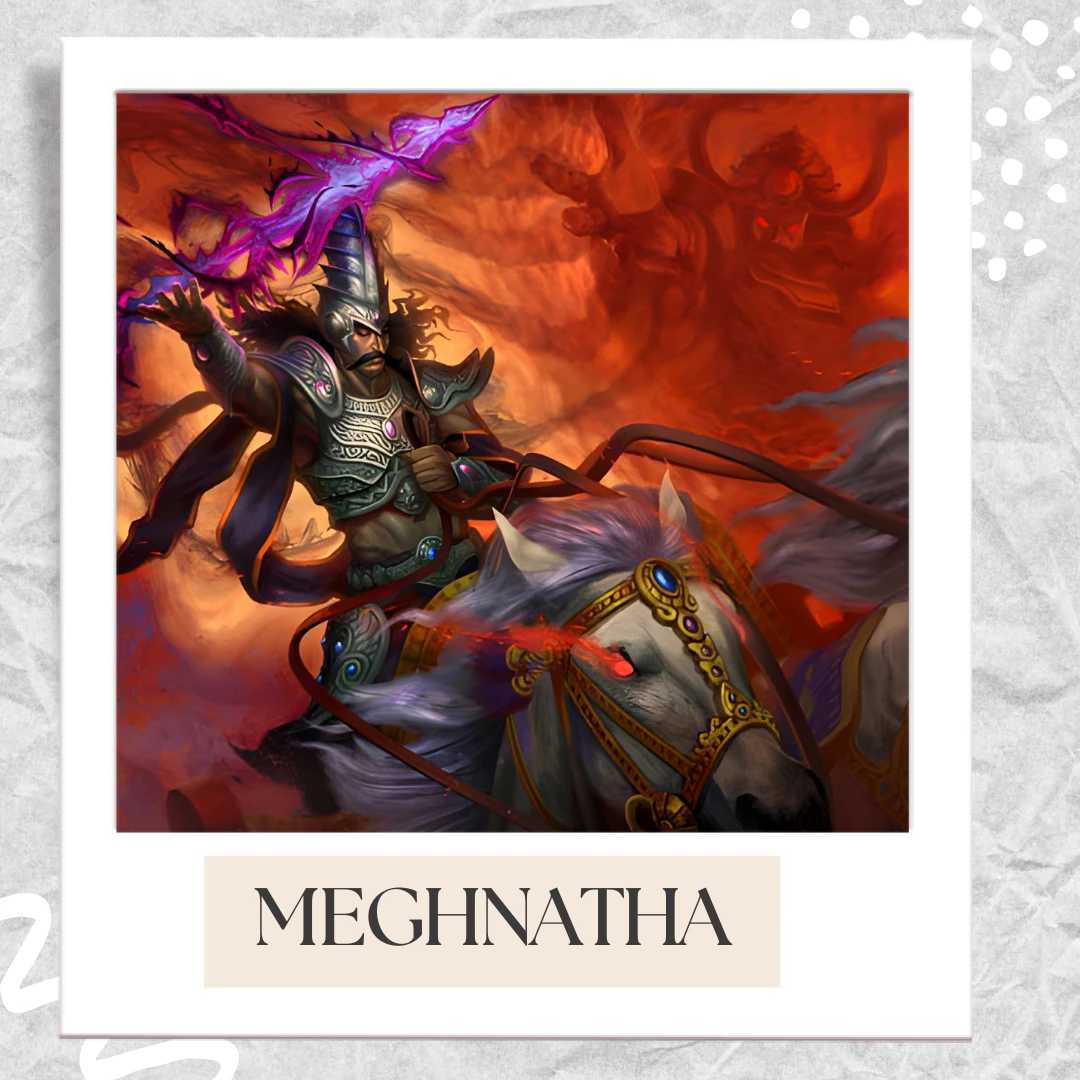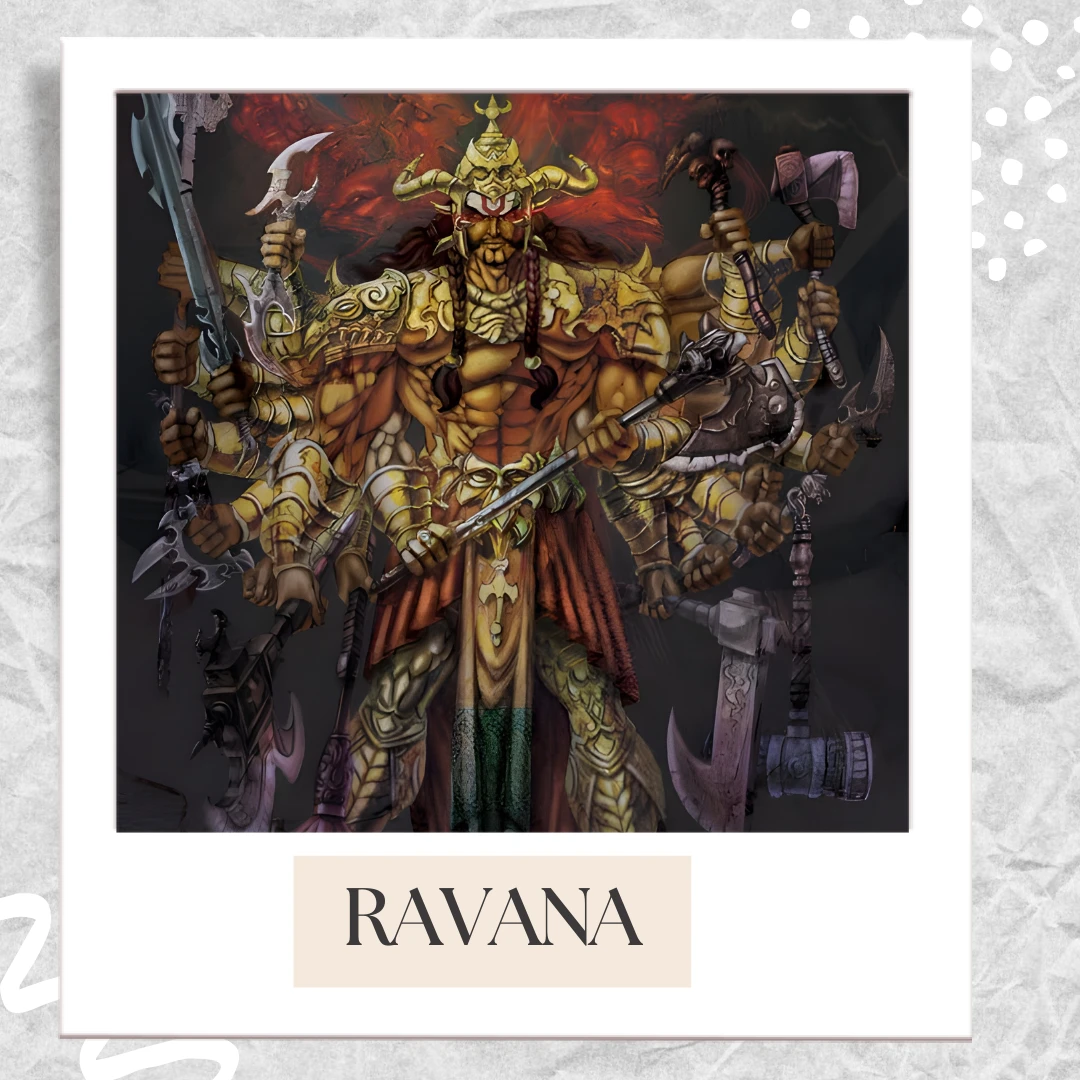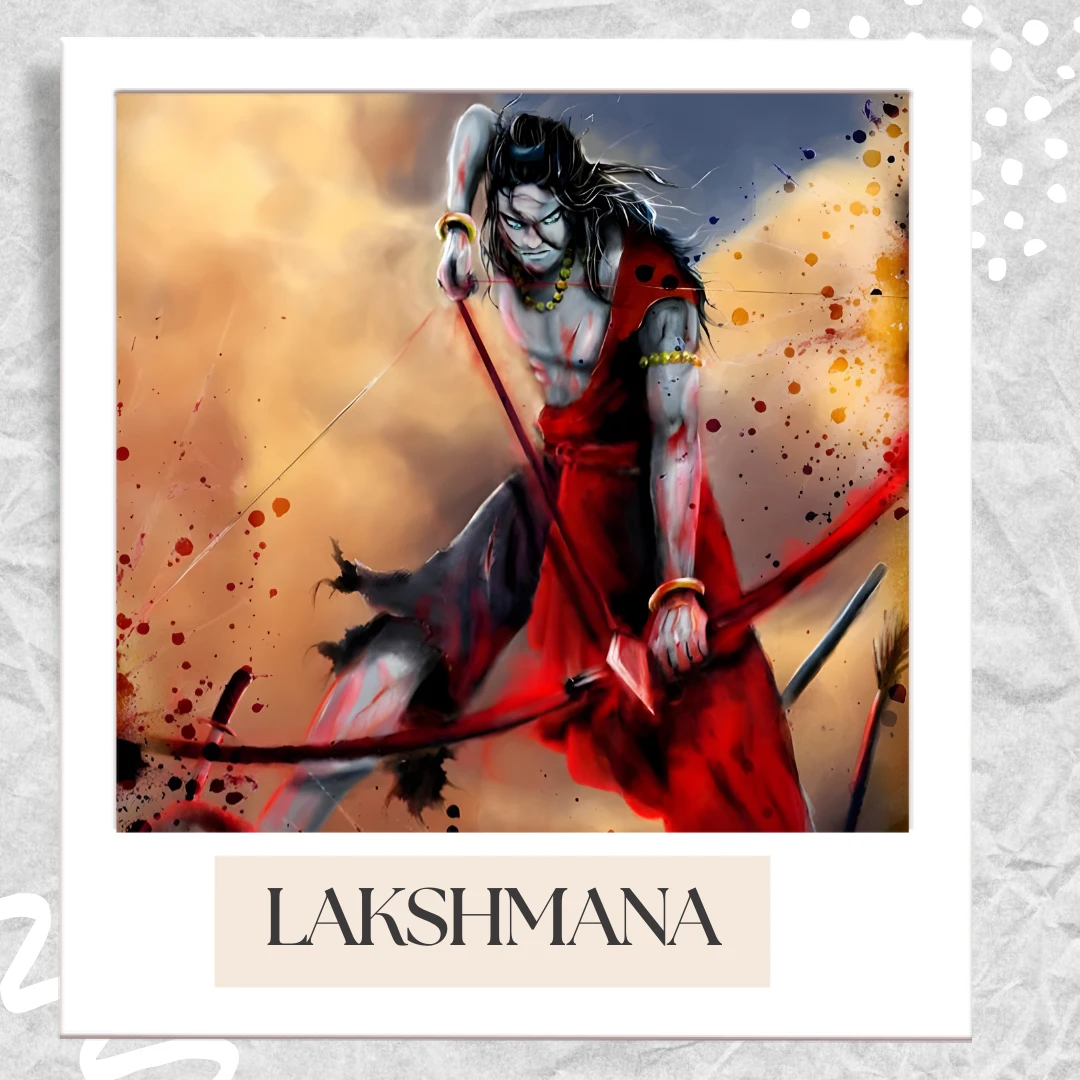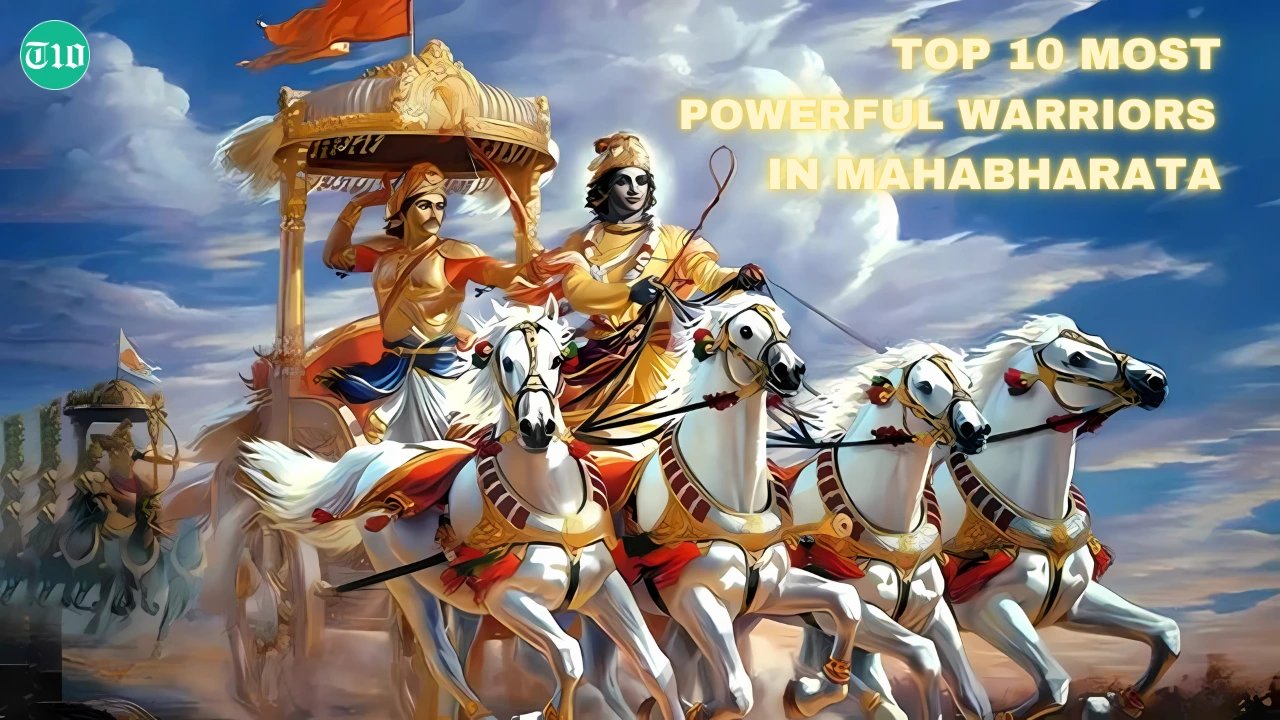Exploring the crux of this epic, let’s delve into the extraordinary saga of the “Top 5 Most Powerful Warriors in Ramayana,” elucidating their unmatched contributions and lasting legacies within this revered tale of valor and righteousness.
In the timeless saga of the Ramayana, the valor and prowess of its warriors stand as pillars shaping the epic’s narrative.
Among the myriad characters, a select few emerge as the embodiment of unparalleled strength, skill, and strategic brilliance.
I. Introduction
The Ramayana, an ancient Indian epic, stands as a testament to the rich tapestry of mythology and culture that has transcended time. In this exploration, we delve into the intricacies of this venerable narrative, shedding light on the significance of its revered warriors.
A. Brief Overview of the Ramayana
The Ramayana, attributed to the sage Valmiki, is a sprawling epic that narrates the life of Prince Rama, his wife Sita, and his loyal companion Hanuman. Set in the Treta Yuga, it unfolds the trials and triumphs of these iconic characters, offering timeless lessons and moral insights.
This monumental narrative comprises seven books, each encapsulating pivotal episodes in Rama’s journey. From his exile to the abduction of Sita by the demon king Ravana, every twist and turn serves as a metaphor for the eternal struggle between righteousness and evil.
B. Importance of Warriors in the Epic
Warriors hold a paramount role in the Ramayana, embodying virtues of valor, loyalty, and sacrifice. Rama, the epitome of a righteous ruler, showcases unwavering commitment to dharma. His prowess in battle and unwavering commitment to justice position him as a symbol of virtue and righteousness.
Hanuman, the devoted devotee and ally of Rama, symbolizes unwavering loyalty and unparalleled strength. His pivotal role in the search for Sita and the subsequent war against Ravana underscores the importance of steadfast allies in the face of adversity.
In contrast, Ravana represents the epitome of hubris and moral decay. His lust for power and disregard for ethical boundaries lead to his eventual downfall. The clash between these formidable warriors serves as a powerful allegory for the eternal struggle between good and evil.
II. Criteria for Power
Evaluating the most powerful warriors in the Ramayana involves assessing their strength in combat, the arsenal of weapons and skills they possess, and their impactful contributions to the unfolding storyline.
A. Strength in Combat
In evaluating the most powerful warriors in the Ramayana, their prowess in combat serves as a crucial criterion. The ability to engage in intense battles, face formidable adversaries, and emerge victorious showcases the true strength of a warrior.
Assessing their physical strength, combat techniques, and resilience on the battlefield provides insight into their overall martial capabilities.
B. Weapons and Skills
The weaponry and skills possessed by a warrior play a significant role in determining their power. The Ramayana is rich with descriptions of divine weapons and extraordinary combat skills.
Evaluating the arsenal at a warrior’s disposal, including celestial bows, divine arrows, and specialized combat techniques, sheds light on their capacity to overcome challenges and contribute to the epic’s unfolding events.
C. Impact on the Storyline
The influence a warrior exerts on the overall narrative of the Ramayana is another vital aspect of their power. Beyond individual feats, their actions and decisions shape the course of events in the epic.
Warriors who leave an indelible mark on the storyline through pivotal moments, strategic contributions, or transformative character arcs demonstrate a unique level of power that extends beyond the battlefield.
By examining these criteria, we can unravel the complexities of power in the Ramayana and identify the top warriors whose strength, weaponry, skills, and narrative impact set them apart in this timeless epic.
5. Indrajit (Meghnad)

5.1 Background and Significance of Indrajit
In the epic Ramayana, one of the most formidable warriors to grace the battlefield is Indrajit, also known as Meghnad. Revered as the son of Ravana, the demon king, and Mandodari, his birth is enveloped in mystique and divine significance.
Born with celestial blessings and an indomitable spirit, Indrajit’s background is intertwined with destiny and divine prophecies.
His very existence adds a layer of complexity to the epic narrative, making him a pivotal character in the great saga of Ramayana.
5.2 Exceptional Skills and Boons of Indrajit
Indrajit’s prowess as a warrior is unparalleled, owing to his exceptional skills and the boons granted to him by Lord Brahma.
Gifted with invincible weaponry and unparalleled martial abilities, Indrajit becomes an insurmountable force on the battlefield.
His proficiency in the use of divine weapons, coupled with his mastery over mystical arts, makes him a daunting adversary for even the most valiant warriors.
The boons bestowed upon him elevate Indrajit to the status of an almost invincible warrior, making him a pivotal figure in the cosmic struggle between good and evil.
5.3 Major Battles and Strategies of Indrajit
Indrajit’s role in the Ramayana unfolds through his involvement in major battles, showcasing his strategic acumen and combat prowess.
One of his most renowned feats is the successful execution of the “Nikumbhila Yagna,” a ritual that granted him the power to become invincible in battle.
His strategic brilliance comes to the forefront in the fierce battles against Lord Rama and his allies. Indrajit’s tactical maneuvers, coupled with his unparalleled combat skills, make him a force to be reckoned with, challenging the very fabric of righteousness.
In summary, Indrajit (Meghnad) emerges as a captivating character in the Ramayana, contributing significantly to the epic’s narrative depth.
His background, exceptional skills, and strategic brilliance make him one of the top and most powerful warriors in this timeless saga, leaving an indelible mark on the annals of Hindu mythology.
4. Ravana

4.1 Introduction to Ravana’s Character
Ravana, the formidable antagonist in the epic Ramayana, is a character of immense complexity and depth. Known as the king of Lanka, he is portrayed as a powerful and learned demon king with ten heads and twenty arms, signifying his extraordinary prowess.
Born to the sage Vishrava and the demon princess Kaikesi, Ravana’s lineage is a unique blend of both divine and demonic elements, contributing to his exceptional abilities.
Ravana is characterized by his profound intelligence, strategic acumen, and an insatiable desire for power. His devotion to Lord Shiva, coupled with his knowledge of mystic arts, makes him a force to be reckoned with.
Despite being a formidable adversary, Ravana’s tragic flaw lies in his unchecked arrogance and ego, ultimately leading to his downfall.
4.2 Unparalleled Strength and Knowledge
Ravana’s strength is legendary in the Ramayana. His celestial boon from Lord Brahma granted him immunity from being killed by gods, demons, or spirits. This made him virtually invincible in battle, instilling fear in both the mortal and immortal realms.
Ravana’s mastery over various weapons, including the divine Pashupatastra, further amplified his martial prowess, making him a formidable opponent.
In addition to his physical might, Ravana’s intellectual prowess is equally noteworthy. A skilled musician, scholar, and a master of the Vedas, he was not merely a brawny warrior but also a man of refined taste and intellect.
His ability to govern the prosperous city of Lanka and maintain a disciplined army attests to his administrative skills.
4.3 Importance as an Antagonist and Warrior
Ravana’s role as the primary antagonist in the Ramayana adds depth and conflict to the narrative. His relentless pursuit of power and abduction of Sita, Lord Rama’s wife, sets the stage for the epic battle between good and evil.
Ravana’s character serves as a symbol of the consequences of unchecked ambition and the importance of righteousness prevailing over malevolence.
As a warrior, Ravana engages in epic confrontations with Lord Rama and his allies. His prowess on the battlefield showcases his ability to withstand the mightiest of attacks, posing a substantial challenge to the forces of dharma.
Ultimately, Ravana’s significance lies not only in his martial strength but also in the moral and philosophical lessons his character imparts throughout the Ramayana.
3. Lord Lakshmana

3.1 Description of Lakshmana’s Character Traits
Lord Lakshmana, an epitome of unwavering loyalty and unparalleled dedication, is a central figure in the epic Ramayana. His character is defined by selflessness, righteousness, and an undying commitment to serving his elder brother, Lord Rama.
Lakshmana’s unwavering resolve and unyielding devotion make him a formidable warrior whose character traits contribute significantly to the overarching narrative of the Ramayana.
3.2 Skills in Archery and Combat
Renowned for his exceptional prowess in archery and combat, Lakshmana stands out as one of the most skilled warriors in the Ramayana. His proficiency with the bow and arrow is unparalleled, and his martial skills are often described as extraordinary.
Lakshmana’s combat abilities are not only a testament to his physical strength but also reflect his disciplined training under the guidance of Guru Vashishta.
Whether on the battlefield or facing formidable adversaries, Lakshmana’s mastery in archery and combat makes him an indispensable asset to Lord Rama.
3.3 Dedication and Loyalty to Lord Rama
Lakshmana’s loyalty to Lord Rama is unmatched and forms the cornerstone of his character.
His unwavering dedication is evident throughout the epic, as he willingly sacrifices personal comforts and even his sleep to stand guard over Rama and Sita during their exile in the forest.
Lakshmana’s commitment to his brother extends beyond the physical realm; it embodies a profound spiritual connection, emphasizing the values of familial duty and loyalty.
His sacrifices and unwavering support make Lakshmana an exemplary figure of devotion and loyalty in the Ramayana.
2. Lord Hanuman

2.1 Introduction to Hanuman’s Character
In the epic Ramayana, one of the most revered and powerful warriors is Lord Hanuman. Born to Anjana and Kesari, Hanuman is a devout disciple of Lord Rama and plays a pivotal role in the battle against the demon king Ravana.
His unwavering loyalty, immense strength, and divine lineage make him a central figure in the epic.
2.2 Unique Powers and Abilities
Hanuman is renowned for his extraordinary powers and abilities that set him apart from other warriors. His strength knows no bounds, as he possesses the capability to alter his size at will.
The ability to fly at incredible speeds, often carrying mountains and leaping across oceans, showcases the extent of his prowess. Additionally, Hanuman is blessed with immortality, making him an immortal force in the battle between righteousness and evil.
Apart from physical prowess, Hanuman is also bestowed with intellectual acumen. His unyielding devotion to Lord Rama grants him access to divine knowledge, and he becomes a repository of wisdom and guidance.
Hanuman’s unique blend of physical strength and intellectual prowess makes him an unparalleled warrior in the Ramayana.
2.3 Role in Aiding Lord Rama and His Army
Hanuman’s role in aiding Lord Rama and his army is of paramount significance. His unwavering loyalty and dedication to Rama lead him to locate Sita, who had been abducted by Ravana.
The pivotal moment of Hanuman’s leap across the ocean to reach Lanka in search of Sita not only showcases his physical prowess but also symbolizes his undying devotion to the righteous cause.
In the subsequent battle, Hanuman’s combat skills and strategic insights play a crucial role in turning the tide in favor of Lord Rama. His fearless exploits, including setting Lanka ablaze with his burning tail and defeating powerful adversaries, solidify his status as one of the most powerful warriors in the Ramayana.
In conclusion, Lord Hanuman’s character in the Ramayana is characterized by his unique combination of physical strength, intellectual prowess, and unwavering devotion.
His extraordinary powers and pivotal role in aiding Lord Rama make him a standout warrior in the epic, earning him a revered place among the most powerful beings in the Ramayana.
1. Lord Rama

1.1 Description of Lord Rama’s Character
Lord Rama, the seventh avatar of Lord Vishnu, is revered for his unwavering devotion to righteousness and his exemplary character.
Described as the embodiment of dharma (righteousness) and maryada purushottama (the perfect man), Rama is known for his moral integrity, compassion, and dedication to duty. His life story, as depicted in the epic Ramayana, serves as a timeless guide for righteous living.
1.2 His Combat Skills and Valor
Lord Rama’s martial prowess is legendary, showcasing exceptional combat skills and valor. He is a master of various weapons, including the bow and arrow. His archery skills are unparalleled, symbolizing precision and power.
Rama’s training under the guidance of sage Vishwamitra and his subsequent feats, such as breaking Lord Shiva’s bow to win Sita’s hand in marriage, highlight his extraordinary abilities as a warrior.
In the epic battles against the forces of evil, Rama demonstrates strategic acumen and fearlessness. His ability to inspire and lead armies earns him the respect and loyalty of warriors like Hanuman, Lakshmana, and Sugriva.
Rama’s unwavering determination and commitment to upholding righteousness make him a formidable force on the battlefield.
1.3 Significance in the Battle Against Ravana
Lord Rama’s role in the battle against Ravana, the demon king of Lanka, is a central theme in the Ramayana. Ravana, with his ten heads and immense strength, poses a formidable challenge.
Rama’s quest to rescue his kidnapped wife, Sita, leads to a fierce confrontation with Ravana’s forces.
During the epic battle, Rama’s strategic brilliance, coupled with his martial skills, ultimately leads to the defeat of Ravana. The war showcases Rama’s commitment to justice and the triumph of good over evil.
Rama’s victory not only restores order and righteousness but also serves as a symbol of the enduring power of virtue.
In summary, Lord Rama stands out as one of the most powerful warriors in the Ramayana, not only for his exceptional combat skills but also for his unwavering commitment to righteousness and justice.
His exemplary character and valor make him a revered figure, inspiring generations with the timeless lessons embedded in his epic journey.
III. Conclusion
In delving into the epic tapestry of the Ramayana, we have encountered a formidable array of warriors, each possessing unique strengths and contributing significantly to the narrative.
A. Their Impact on the Ramayana’s Narrative and Legacy
The top five warriors in the Ramayana collectively shape the ebb and flow of the epic’s narrative, infusing it with depth and complexity. Their individual journeys, conflicts, and alliances contribute to the broader themes of duty, righteousness, and the triumph of good over evil.
Rama’s exile, Sita’s abduction, and the ensuing war are pivotal moments fueled by the actions of these warriors. Lakshmana’s sacrifice, Hanuman’s devotion, Ravana’s arrogance, and Indrajit’s tactical brilliance all leave an indelible mark on the legacy of the Ramayana.
The enduring impact of these characters resonates not only through the verses of Valmiki but also in various retellings, adaptations, and cultural expressions. Their stories continue to inspire generations, shaping the moral and ethical fabric of Indian society.
B. Final Thoughts on Their Significance in Indian Mythology
The Ramayana’s powerful warriors are not merely characters in an ancient epic; they represent archetypes that reflect the timeless values and virtues upheld in Indian mythology.
Rama, Lakshmana, Hanuman, Ravana, and Indrajit embody the eternal struggle between righteousness and malevolence, offering profound lessons that transcend temporal and cultural boundaries.
Their significance lies in the ability of their stories to resonate with individuals on a personal and moral level. Through their trials and triumphs, these warriors invite contemplation on duty, loyalty, sacrifice, and the consequences of straying from the path of dharma.
In essence, the legacy of these powerful warriors extends beyond the confines of the Ramayana, becoming integral to the broader tapestry of Indian mythology and moral philosophy.
IV. Quick Recap of Top 5 Most Powerful Warriors in Ramayana
- Lord Rama
- Lord Hanuman
- Lord Lakshmana
- Ravana
- Indrajit (Meghnad)
As we recap the top five powerful warriors, it becomes evident that their prowess transcends mere physical strength, embodying qualities that make them enduring figures in Indian mythology.
V. Frequently Asked Questions (FAQ)
What is the Ramayana?
The Ramayana is an ancient Indian epic that narrates the life and adventures of Lord Rama, his wife Sita, and his loyal companions. It’s revered as a significant cultural and religious text in Hinduism.
Why focus on warriors in the Ramayana?
Warriors play a pivotal role in the Ramayana, shaping the narrative through their valor, skills, and contributions to the epic’s storyline.
What attributes define a powerful warrior in the Ramayana?
A powerful warrior is characterized by their strength in combat, mastery of weapons and skills, and their impact on the progression of events in the Ramayana.
Are there specific criteria for ranking these warriors?
Yes, the ranking is based on their prowess in battle, the significance of their roles, and their overall impact on the storyline.
Who is Lord Rama?
Lord Rama is the seventh avatar of the Hindu god Vishnu and the central character in the Ramayana. He is known for his righteousness, bravery, and adherence to dharma (duty/righteousness).
What makes Lord Rama a powerful warrior?
His exceptional combat skills, unwavering courage, and leadership abilities make him a formidable warrior in the Ramayana.
Who is Hanuman, and why is he important?
Hanuman is a devoted disciple of Lord Rama, known for his immense strength, intelligence, and unwavering devotion. He played a crucial role in helping Lord Rama rescue Sita.
What unique powers and abilities does Hanuman possess?
Hanuman possesses the power of flight, incredible physical strength, and the ability to change size at will.
Who is Lakshmana in the Ramayana?
Lakshmana is Lord Rama’s younger brother known for his selfless devotion and unwavering support for Rama during exile and the war against Ravana.
What were Lakshmana’s notable skills in combat?
He was a skilled archer and warrior, known for his bravery and dedication to protecting Lord Rama and Sita.
Who is Ravana, and why is he considered powerful?
Ravana is the antagonist in the Ramayana, a formidable king with immense knowledge, strength, and mastery over dark arts.
What were Ravana’s exceptional abilities?
His strength, intelligence, and possession of divine boons made him a powerful adversary against Lord Rama.
Who is Sugriva, and what role did he play in the Ramayana?
Sugriva was a Vanara (monkey) king who allied with Lord Rama. He showed exceptional leadership skills and strategic acumen.
How did Sugriva contribute to the battle against Ravana?
Sugriva’s leadership and alliance were instrumental in assembling and organizing the Vanara army to aid Lord Rama.
Why is it important to recognize these powerful warriors?
These warriors symbolize valor, loyalty, and righteousness, contributing significantly to the narrative and cultural significance of the Ramayana.
What’s the lasting impact of these warriors on Indian mythology?
Their stories continue to inspire moral values, bravery, and devotion, leaving a lasting imprint on Indian mythology and cultural ethos.










